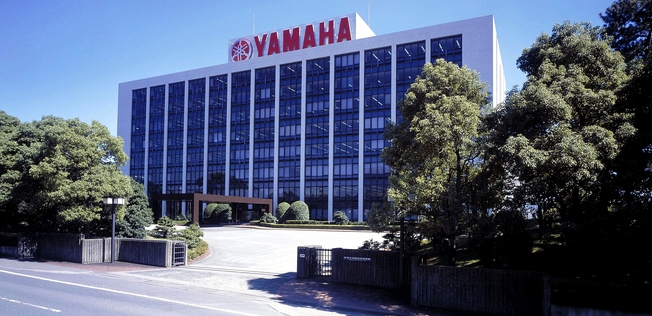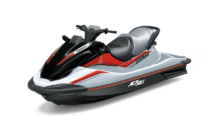Yamaha reports first nine months results for 2024
While Yamaha Motor is involved in many markets, however, its core motorcycle business rose in the first nine months of fiscal year 2024. Developed markets such as Europe and the U.S. led the way, resulting in higher numbers than last year. And demand in emerging markets, primarily Brazil, India, and Indonesia, delivered higher unit sales for the Japanese manufacturer.

“Our results for the third quarter saw us record higher revenue year on year, but operating income was about the same as last year. In the motorcycle business, we posted both higher sales and profits thanks to increased shipments of premium models to emerging markets. Sales and profits in the Marine Products business fell due to ongoing production adjustments aimed at optimizing inventory levels and from fewer outboard motor shipments. In the Robotics business, higher demand for generative AI applications brought in higher sales of our semiconductor back-end process manufacturing equipment, which helped narrow the business’ deficit.”
– Katsuaki Watanabe, Yamaha Motors president and CEO
Yamaha’s CEO says that the lower interest rates in the United States have helped stem rising prices, but many external factors, such as exchange rates and monetary policies, remain unclear. “The situation each of our business segments is facing is different,” says Watanabe. “However, with our competitors having improved their product supply operations, lower demand levels, and other factors, we expect the competitive playing field to remain severe. On top of that, the prices and rates for ocean freight, raw materials, labor, and more are rising, so we will need to keep costs in check.”
As a result, Yamaha revised its forecast for fiscal 2024 downward. “We have our eyes on fiscal 2025, which will mark the first year of our new Medium-Term Management Plan,” says Watanabe, who adds that the recreational vehicle (RV) and Smart Power Vehicle (SPV) businesses, which are currently operating at a loss, are currently under review to streamline for the future.
Consolidated Results
Revenues for the period were 1,976.9 billion yen (an increase of 141.7 billion yen or 7.7% compared with the same period of the previous fiscal year) and operating income was 201.0 billion yen (an increase of 1.6 billion yen or 0.8%).
For the period, the U.S. dollar traded at 151 yen (a depreciation of 13 yen from the same period of the previous fiscal year) and the euro at 165 yen (a depreciation of 15 yen).
Brazil, India, and Indonesia saw higher overall unit sales in the company’s core motorcycle business. For operating income, the effects of higher revenue and cost-cutting efforts in the motorcycle business as well as the positives of a weaker yen were contributing factors, but lower sales in the Marine Product, RV, and SPV businesses led to profits on par with last year. Net income attributable to owners of parent fell due to an increase in foreign exchange losses and higher interest expenses brought on by a stronger yen at the end of the quarter.
Motorcycles (Land Mobility segment)
Revenues were 1,324.6 billion yen (an increase of 122.1 billion yen or 10.2% compared to the previous fiscal year) and operating income was 107.7 billion yen (an increase of 3.3 billion yen or 3.2%).
For the motorcycle business, unit sales rose in developed markets such as Europe and the U.S., resulting in higher numbers than last year. Demand in emerging markets-primarily Brazil, India, and Indonesia-went up and increased the unit sales recorded for the entire emerging market motorcycle business. Revenues for the motorcycle business went up thanks to the higher unit sales in those three markets as well. For operating income, in addition to the effects of higher revenues, improved supply of premium segment models in emerging markets, cost reductions, and the benefits of a weaker yen brought in higher profits.

With recreational vehicles (ATVs and ROVs), market demand and shipments fell below last year’s numbers, resulting in lower revenues. Furthermore, lower unit sales, a worsening model mix, and higher marketing and promotional expenses accompanying the intensifying competition left the business with lower profits.
For the Smart Power Vehicles business, i.e., electric wheelchairs, electrically power-assisted bicycles (eBikes) and their drive units (e-Kits), unit sales of eBikes in Japan surpassed last year’s numbers. However, in Europe, the main market for Yamaha Motor e-Kits, market inventory adjustments have remained ongoing, resulting in a decline in unit sales and lower sales overall. In terms of operating income, the lower unit sales, increase in sales promotion expenses, and decreasing value of complete Yamaha models in inventory overseas in the U.S. led to the SPV business posting lower profits. Yamaha has since pulled out of the U.S. ebike business.
Marine/PWC
Revenues were 415.5 billion yen (a decrease of 15.8 billion yen or 3.7% compared to the previous fiscal year) and operating income was 79.3 billion yen (a decrease of 5.0 billion yen or 5.9%).
While the U.S. outboard motor segment saw an interest rate drop in September, the still high level of interest rates in general, as well as ongoing price increases, led to decreased demand. Unit sales of new Yamaha outboard models were positive, but sales were lower for the outboard business overall. The high interest rates for personal watercraft made customers hesitant, and demand decreased. Despite this lower demand showing effects in the third quarter, unit sales increased thanks to improvements addressing last year’s lack of parts and supply chain disruptions, forcing Yamaha to limit product supply. As a result, sales and profits fell overall for the Marine business. Also, Yamaha Motor’s third quarter consolidated business results include the performance recorded by German electric marine propulsion manufacturer Torqeedo GmbH during the period of April to September 2024.
Financial Services
Revenues were 84.2 billion yen (an increase of 22.8 billion yen or 37.2% compared to the previous fiscal year), and operating income was 15.7 billion yen (an increase of 2.1 billion yen or 15.5%).
As financial receivables increased, Yamaha says it made progress in passing procurement interest rates on to customers, pushing revenues up. As for operating income, in addition to higher income from interest payments, the appraised losses derived from interest rate swaps last fiscal year were converted to appraisal gains this fiscal year. This increased profits for the period.
Other Products
Revenues were 75.0 billion yen (an increase of 6.0 billion yen or 8.7% compared to the previous fiscal year), and operating income was 0.4 billion yen (compared to an operating loss of 0.7 billion yen).
A higher demand for golf cars in North America drove up unit sales and those higher sales led to increased revenue and profits.
2024 Outlook
In light of the worsening market conditions Marine, RV, SPV, and Robotics businesses are facing, as well as inventory write-downs for the SPV business and others, Yamaha has made downward revisions to its income forecast for fiscal 2024.











